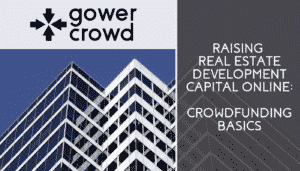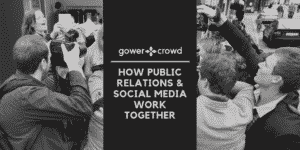Anatomy of a Webinar for Real Estate Developers
By Adam Gower Ph.D.
The humble webinar is one of the tools we tend to gloss over. It may be in your arsenal, but you don’t do webinars often because they haven’t worked well, they’re too much work, you’re a bit camera shy, or maybe you just have no clue how to put one together.
But did you know that webinars can be an incredibly powerful tool in real estate capital raising? By setting them up with the most effective structure, using data to tweak the specifics, and putting them on autopilot, you can get drive tremendous traffic to webinars and convert more prospects into being active investors.
Webinars are a full-service sales experience.
From start to finish, the point is to connect with your audience and get them to respond in a certain way to your message. You want them to know, like, and trust you enough by the end of that webinar that they’ll move on to the next step.
Anatomy of a Webinar
Webinars vary based on the audience. You could have anything from a 20-minute workshop to a 1-hour introduction to investment or even a 5-minute live pitch session.
Even though webinars often have a more personal feel to them, they do have a recognizable structure as well. Here’s a breakdown of what’s usually involved:
Get access to our FREE weekly newsletter exclusively covering the latest updates from the real estate crowdfunding world
- The Hook
How do you draw people in and make them want to register for your webinar? You must have a pitch that makes sense for your audience and lets them know the value they’re going to receive. Webinars need to offer value and to give an honest preview of what they’re going to offer participants.
Often, this is a multi-step process. You can approach it with targeted re-marketing to people who have viewed some of your content before, email marketing, or really any other method. Personalized marketing tends to work better, since webinars are generally only appropriate for a niche group of people who want exactly what you’re offering.
Draw them in and hook them into registration. Then, make sure to remind them about the webinar (by email) before it happens to improve attendance rates.

- Introduction
It’s a good idea to preview the content you’re going to cover in your webinar at the beginning.This gives people a solid idea about why they should sit through the whole presentation and what they can expect to learn or experience through it. This is just a short bit at the beginning of your session.
From the very beginning, you’re trying to build trust and create a personal connection. This is all part of that process.
- Personal Bridging
One of the most important parts of a webinar is going to be your personal bridging. If you want people to stick around and listen to what you have to say, especially people who aren’t familiar with you already, you have to give them a good reason why you can be trusted to talk about that topic. Establish where your authority on the topic comes from. Why are you a credible source?
You don’t need to sing your own praises.
No one signed up to a webinar to hear you go on endlessly about yourself. But you do need to back up where you’re getting your information from and how you came to have the knowledge you do. This is a good time to talk about your own relevant personal experience or to present the research you’re going to relate to your content.
- The Meat
Here’s where you get into the thick of it. As a developer, your content could be anything from a detailed explanation of a project you’re pitching for investment or an informative session about the intricacies of real estate development. Whatever the content is, make it relevant and valuable for your audience. The content itself should also lead nicely into whatever you’re offering as a next step.
- Call to Action
Calls to action (CTAs) are simply you asking your audience to respond to the webinar in a specific way. Whether you’re looking for investment commitments or a 30-minute strategy call, you’re going to need a CTA inserted into your webinar a few times. You can sprinkle them in a few times throughout the session instead of just leaving them until the end.
Different Parts of the Webinar
Don’t get too caught up in the structure. You can’t just fill in a skeleton outline of a webinar and hope for the best. You need to tailor it to your audience and make it work for them. This means everything from setting up dedicated landing pages for CTAs to creating marketing emails that target people interacting with the webinars in certain ways (no-shows, early leavers, people who didn’t click the CTAs, people who did, etc.).
There’s a lot that goes into a webinar. In order to keep it all straight and to be as efficient as possible, you need to have data backing you up at every turn. It’s best if you can use a webinar program which records data about every moving part, connecting with your outside analytics to form a useful network of facts.
Making decisions is much easier when you know the impact, reach, effectiveness, and value of what you’re doing. Building the perfect webinar for your projects is going to be a trial and error process. Find what works, supported by the data, and what doesn’t. Refine it as you go and never settle too comfortably that you can’t adapt again when necessary.
Get access to our FREE weekly newsletter exclusively covering the latest updates from the real estate crowdfunding world
Automating Your Webinars
With the right tools, automation is possible for almost anything online, even webinars. Never mind that people consider webinars more personal and equivalent to a personal lecture; if you have the right setup and the right tools, you can easily make it an automate, touch-free process without cheating your audience out of the value you’re providing.
Recorded webinars, when automated well, can have the same impact as a live seminar.
You can set it up as you please to fit your business needs. Automation is a powerful, but mostly untapped tool for webinars. With it, you can free up a lot of time without lowering your impact. There’s no reason you should have to be speaking live during every webinar. If it’s an evergreen topic and you’re not doing a live Q&A session during the webinar, it’s a perfect candidate for automation.
Automating a webinar doesn’t take the personal touch out of it. You can still achieve that easily with all the surrounding personal touches. Make it feel tailored and unique for your audience.
***
The power of automated webinars comes with an incredible variety of options and sophistication. Host the same webinar in multiple time zones around the world while only having to record it once. Hold webinars throughout the day at different time slots, hopping on for a live Q&A at the end. Refine and reuse your same webinar, tweaking the CTAs and outside pieces to increase impact. These are just a few of the ways automation takes webinars to the next level and can drive prospects to your deals and convert investors into advocates for your projects.



